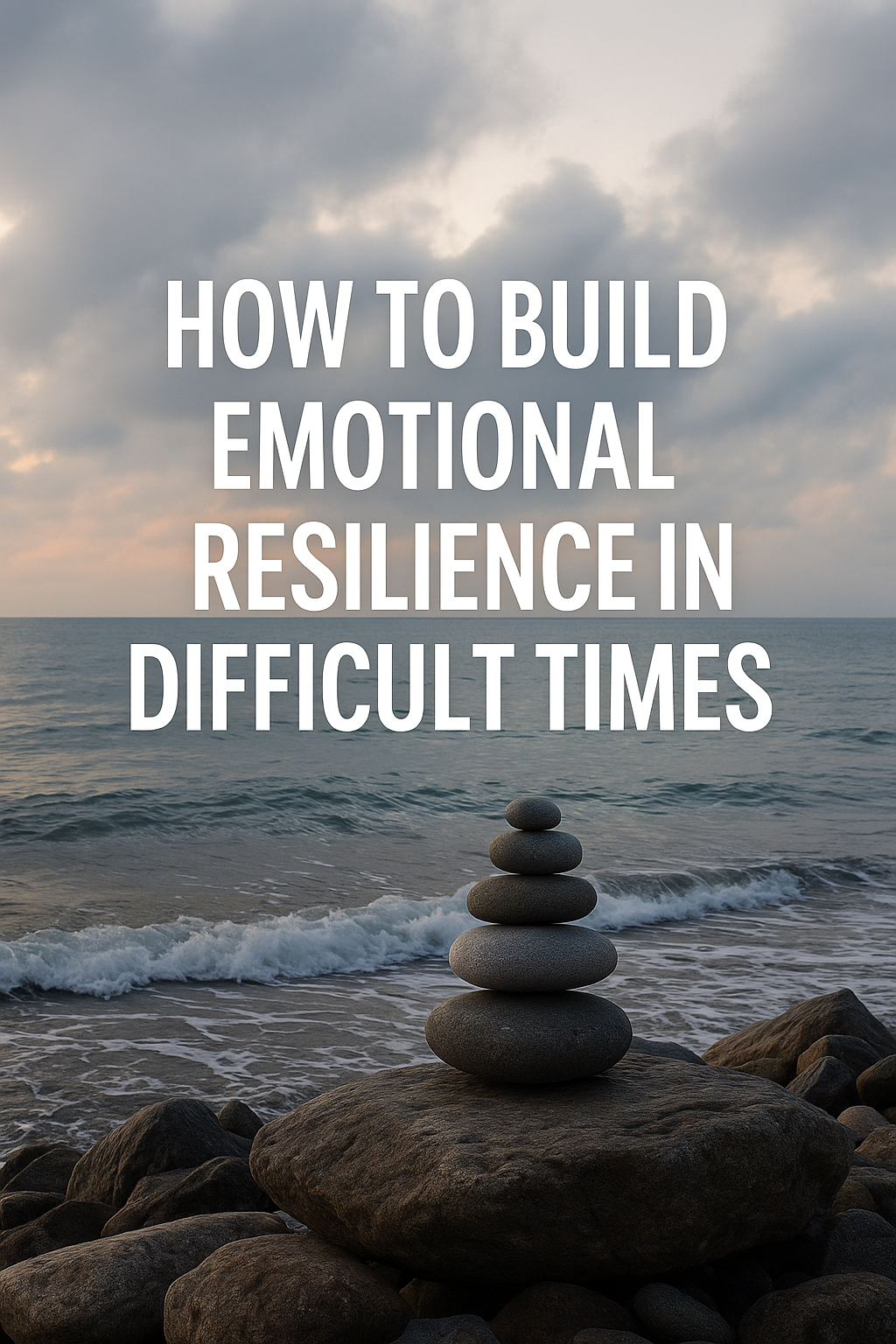Life is unpredictable. You’ll face setbacks, stress, and emotional storms—but how you respond to those challenges can define your growth. Emotional resilience isn’t about avoiding pain; it’s about learning how to move through it with strength, awareness, and grace.
In this article, you’ll discover how to develop emotional resilience and handle life’s difficulties without losing your balance or self-belief.
What Is Emotional Resilience?
Emotional resilience is your ability to:
- Bounce back from adversity
- Manage your emotions in stressful situations
- Stay grounded during uncertainty
- Recover from failure without giving up
- Adapt to change and keep moving forward
It doesn’t mean pretending to be okay—it means learning how to stay present and hopeful, even when things are hard.
1. Acknowledge What You’re Feeling
Resilient people don’t avoid emotions—they recognize and name them.
Try this:
- Pause and ask: “What am I feeling right now?”
- Be honest: Is it anger, fear, sadness, overwhelm?
- Remind yourself: “It’s okay to feel this.”
Naming your emotions reduces their power and helps you respond with clarity.
2. Practice Self-Compassion
Treat yourself like you would a close friend who’s going through a tough time.
Instead of saying:
- “Why can’t I handle this better?”
Try: - “This is a hard moment, and I’m doing the best I can.”
Self-criticism fuels shame. Compassion fuels healing and strength.
3. Strengthen Your Support Network
You don’t have to go through tough times alone.
Reach out to:
- Friends or family who listen without judgment
- A support group or community
- A therapist or counselor
Connection is a powerful antidote to emotional isolation.
4. Focus on What You Can Control
Difficult times often bring a sense of chaos. Resilience means shifting focus to what’s within your control.
Ask yourself:
- What can I influence right now?
- What small step can I take today?
- What boundaries or decisions are mine to make?
Even small actions restore a sense of power and agency.
5. Create a Daily Grounding Practice
When emotions run high, grounding brings you back to the present.
Try:
- Deep breathing (inhale for 4, exhale for 6)
- A short walk outside
- Holding a warm mug and focusing on the feeling
- Naming 5 things you can see, hear, feel
Grounding helps calm your nervous system and reduces anxiety.
6. Reflect and Reframe Your Experience
Pain can lead to growth—but only if you’re willing to reflect.
Ask:
- “What is this challenge teaching me?”
- “What strengths am I developing right now?”
- “How have I handled something similar in the past?”
This doesn’t mean ignoring pain—it means finding meaning within it.
7. Maintain a Sense of Routine
In chaotic times, routine gives structure and stability.
Try to:
- Wake up and go to bed at the same time
- Eat regular meals
- Move your body daily
- Keep small rituals that anchor your day (like journaling or making tea)
Consistency provides emotional safety.
8. Set Boundaries to Protect Your Energy
Resilience includes knowing when to say “no.”
Limit exposure to:
- Overwhelming news
- Draining conversations
- People who invalidate your emotions
Boundaries aren’t about isolation—they’re about protection and care.
9. Remind Yourself: This Too Shall Pass
All emotions are temporary—even the heavy ones. The storm will pass.
Try using mantras like:
- “I’ve been through hard things before.”
- “I don’t have to figure it all out right now.”
- “One day, I’ll look back and see how strong I became.”
Holding hope is an act of resilience.
You Are Stronger Than You Think
Resilience isn’t about being unshakable. It’s about showing up—imperfect, emotional, and real—and still choosing to move forward.
Start here:
- Acknowledge one emotion you’ve been holding
- Take one small step that brings comfort or clarity
- Reach out for support if needed
Your pain is valid. Your strength is real. And your growth is unfolding—one breath, one day, one choice at a time.
